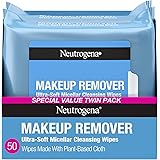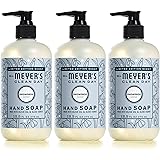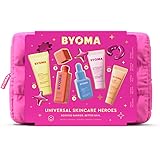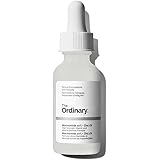Navigating the complex world of skincare can often feel like an intricate puzzle, where distinguishing subtle nuances is key to achieving optimal results. As you might have gathered from the video above, discerning the critical skincare differences between products, ingredients, and even marketing claims is not always straightforward. This challenge often leaves consumers wondering if they are truly making the best choices for their unique skin needs.
However, by developing a refined understanding of formulation, ingredient synergy, and scientific evidence, you can transform your approach. This expert-level guide aims to equip you with the knowledge to “spot the difference” like a seasoned dermatologist, empowering you to make truly informed decisions.
The Subtle Art of Skincare Ingredient Discrimination
At first glance, many active ingredients in skincare can appear similar, offering broad benefits like hydration or anti-aging. Yet, their molecular structure, concentration, and delivery system can profoundly alter their efficacy and how they interact with the skin. Understanding these subtle variations is paramount for any serious skincare enthusiast.
Differentiating Humectants, Emollients, and Occlusives
Consider the fundamental categories of moisturizers: humectants, emollients, and occlusives. While all aim to hydrate, their mechanisms are distinct, making their combined application crucial for comprehensive skin barrier support. Humectants, like hyaluronic acid or glycerin, draw water into the skin from the environment or deeper layers.
Conversely, emollients, such as ceramides and fatty acids, smooth and soften the skin by filling gaps in the lipid barrier, improving flexibility and texture. Occlusives, including petrolatum or lanolin, form a physical barrier on the skin’s surface to prevent transepidermal water loss (TEWL), locking in moisture. Imagining your skin barrier as a wall, humectants are the water, emollients are the mortar, and occlusives are the protective sealant.
Unpacking Active Ingredient Potency and Forms
The potency of active ingredients can vary significantly, even when listed prominently on a label. For example, Vitamin C comes in many forms, with L-Ascorbic Acid being the most potent but also the most unstable, requiring specific pH levels and packaging for efficacy. Other derivatives, like Sodium Ascorbyl Phosphate or Ascorbyl Tetraisopalmitate, offer greater stability but might require conversion in the skin to deliver their benefits, potentially resulting in a less immediate or intense effect.
Similarly, retinoids encompass a family of vitamin A derivatives, from gentler retinyl palmitate to powerhouse tretinoin. The type, concentration, and formulation of these compounds dictate their strength, potential for irritation, and ultimately, their impact on cell turnover and collagen production. Understanding these distinctions allows for targeted application and minimizes adverse reactions.
Beyond the Label: Understanding Formulation Nuances
An ingredient list tells only part of the story; the way ingredients are combined and stabilized within a product’s formulation is equally critical. This intricate dance of chemistry dictates everything from product texture and stability to ingredient penetration and overall efficacy. True skincare differences often lie hidden within these formulation intricacies.
The Importance of pH Balance for Optimal Efficacy
The pH of a skincare product plays a crucial role, especially when dealing with active ingredients like AHAs, BHAs, and Vitamin C. These acids often require a specific, lower pH range to exfoliate effectively or penetrate the skin. However, if the product’s pH is too low or too high, it can either render the active ineffective or lead to skin irritation and barrier disruption.
A cleanser, for instance, should ideally be mildly acidic (around pH 5.5) to maintain the skin’s natural acid mantle, preventing dryness and sensitivity. Understanding a product’s intended pH and its interaction with your skin’s natural environment is a nuanced but essential aspect of savvy skincare. Imagine if you were trying to clean a delicate fabric with the wrong type of soap; the outcome would be less than ideal.
Delivery Systems and Bioavailability
The innovation in skincare isn’t just about discovering new ingredients; it’s also about how effectively those ingredients reach their target cells within the skin. Advanced delivery systems, such as encapsulation, liposomes, or microspheres, protect delicate actives from degradation and facilitate their deeper penetration into the epidermis or dermis. This ensures greater bioavailability, meaning more of the active ingredient is absorbed and utilized by the skin.
Consider a peptide. Without an effective delivery system, it might simply sit on the surface, offering minimal benefit. With an encapsulated system, however, it can be slowly released where it’s needed most, maximizing its anti-aging potential. This distinction can be a significant factor in the perceived efficacy and value of a premium product versus a basic one.
Decoding Marketing Hype vs. Scientific Efficacy
The skincare market is saturated with buzzwords and enticing claims, making it challenging to separate genuine scientific advancements from clever marketing. Learning to critically evaluate these claims is a vital skill in discerning legitimate skincare differences.
“Clean Beauty” vs. Clinically Proven Formulations
The “clean beauty” movement, while well-intentioned, often prioritizes a subjective list of “free-from” ingredients over actual scientific evidence of harm or benefit. While avoiding certain irritants is wise, this trend sometimes demonizes perfectly safe and effective synthetic ingredients. Conversely, clinically proven formulations are backed by rigorous testing, often including independent studies, to demonstrate efficacy and safety.
When evaluating a product, prioritize data-driven claims and ingredient transparency over vague promises of “natural” or “non-toxic.” A product that proudly lists its active concentrations and provides studies to back its claims typically offers more tangible value than one relying solely on aesthetic packaging or trending hashtags.
Interpreting Clinical Studies and Claims
When a product claims to reduce wrinkles by “X%” or increase hydration by “Y%”, it’s important to look for the context. Were these results from an independent, double-blind, placebo-controlled study? What was the sample size? How long did the study last? A small in-house study on a handful of participants over a short period may offer less compelling evidence than a large, multi-center trial.
Additionally, be wary of claims that sound too good to be true, or those that use vague language like “appears to,” “helps,” or “may promote.” True scientific claims are precise, quantifiable, and accompanied by methodology. This critical eye helps you navigate the competitive landscape and identify products with genuine merit.
Tailoring to Your Unique Skin Profile
Ultimately, the most profound skincare differences are experienced when products are perfectly matched to an individual’s unique skin type, concerns, and lifestyle. What works wonders for one person may be detrimental to another, highlighting the importance of personalized care.
Accurate Skin Type and Concern Identification
Misidentifying your skin type – confusing dehydrated skin with dry skin, or temporary breakouts with chronic acne – is a common pitfall. Dry skin lacks oil, while dehydrated skin lacks water and can affect any skin type, even oily skin. Using heavy occlusives on truly oily skin, for instance, could exacerbate congestion, while relying solely on humectants for dry skin might not provide enough barrier support.
Taking the time to accurately assess your skin’s needs through observation, or even with the help of a professional, forms the bedrock of an effective routine. This foundational understanding prevents wasted effort and ensures you select products designed for your specific biological profile.
Patch Testing and Observational Skincare
Even with thorough research, the only way to truly “spot the difference” a new product makes on your skin is through careful observation and patch testing. Before incorporating a new product fully into your routine, apply a small amount to an inconspicuous area, like behind your ear or on your inner forearm, for a few days. This helps identify any immediate sensitivities or allergic reactions.
After a successful patch test, introduce new products one at a time, giving your skin at least two to four weeks to adjust. This systematic approach allows you to pinpoint which products are genuinely beneficial and which might be causing issues, refining your personal understanding of effective skincare differences for your complexion.











